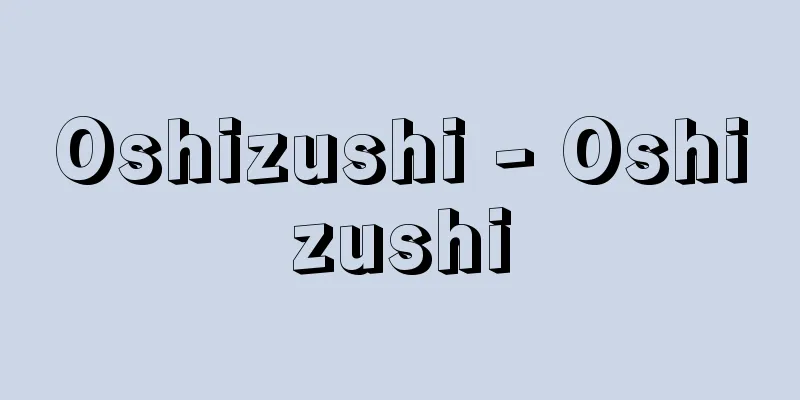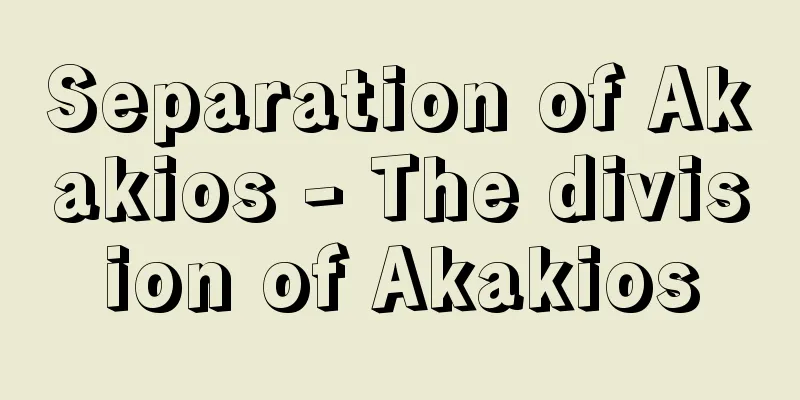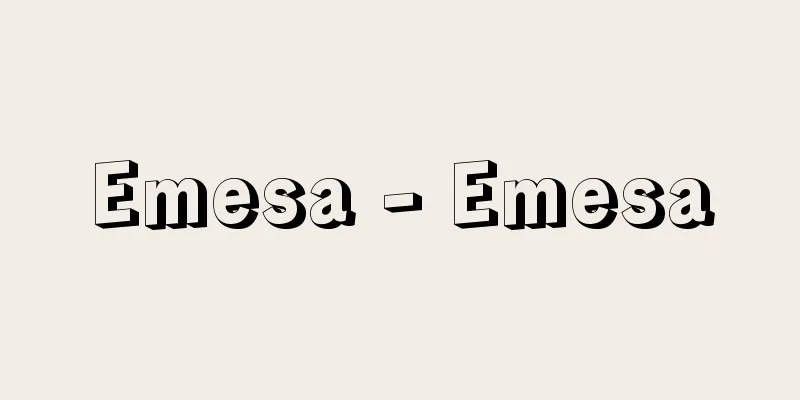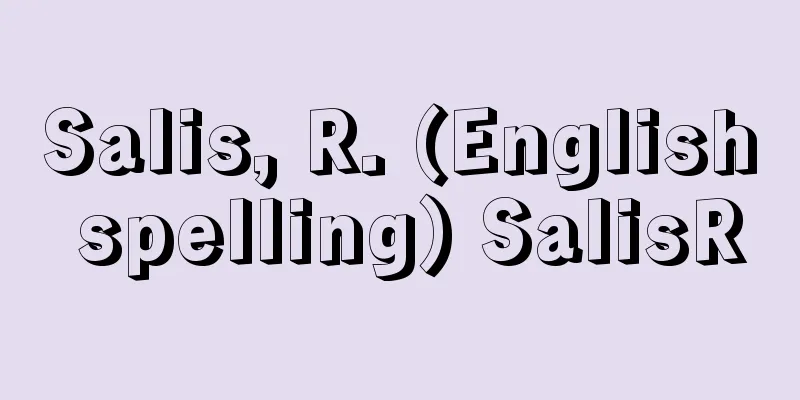Cheque - kogitte (English spelling) cheque
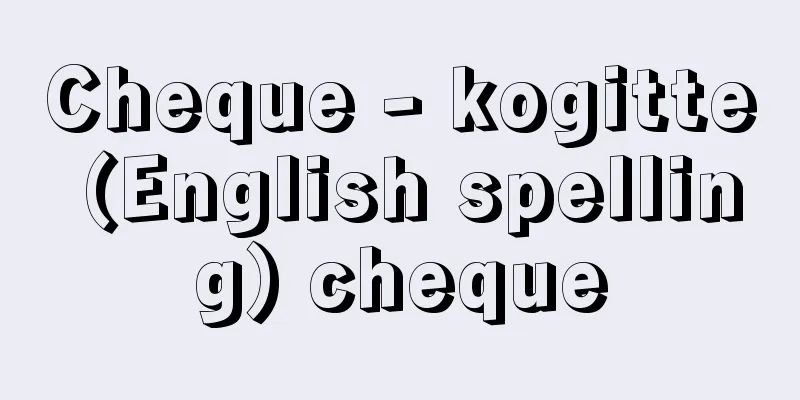
|
A check is a security (a payment entrustment security) in which the issuer entrusts a financial institution with a current account transaction contract to pay a certain amount (the check amount) from his/her own funds. The current legal basis for Japan's check system is the Check Law (Law No. 57 of 1933). [Yutaka Inoue] HistoryThe use of cheques began in Italy in the 14th century and later spread to continental Europe and the UK, with the modern cheque system said to be based on the French Cheque Act of 1865. In Japan, the origins are said to be traced back to the ancient Kamakura period tally cards, and in the Edo period, bills issued with money changers as the payee were developed, but the current cheque and bill system was transplanted from Europe and the US during the Meiji period. The first law relating to cheques and bills was the Bills of Exchange and Promissory Notes Ordinance of 1882 (Meiji 15), followed by provisions in the Commercial Code of 1890 and 1899. The current cheque law was established following the conclusion of the Convention for the Unification of Cheque Laws in Geneva in 1931 (Showa 6), and remains in place to this day. [Yutaka Inoue] Mechanism and FunctionA check is a security entrusted with payment, used to avoid the risks and costs of directly exchanging cash, and is essentially a means of payment in place of cash. In this respect, it differs from bills, which are a means of credit. The issuer (drawer) receives the check paper from the financial institution they do business with based on a current account transaction agreement, fills in the necessary information on it, signs and stamps it, and hands it over to the other party (payee), who then presents the check to the paying financial institution to settle the funds. In this case, the payee may also pass the check around to third parties. Presentation may be done directly at the paying bank's counter, or it may be exchanged and presented via a bill clearing house. The items that must be legally written on a check are (1) the word "check", (2) a simple payment request for a fixed amount, (3) the name of the payor, (4) the place of payment (the payor's address), (5) the place of issue, (6) the date of issue, and (7) the signature of the issuer. However, checks issued by financial institutions already have some parts printed on them, so in reality, it is sufficient to write the fixed amount, place of issue, date of issue, and the signature of the issuer. Checks are generally paid at sight, and the presentation period is 11 days, including the date of issue. [Yutaka Inoue] kindsMost checks are generally bearer checks, which have the payment request phrase "Please make payment to the bearer in exchange for this check." A named check is one in which "bearer" is corrected to "Dear Mr. XX," while a to-order check is one in which "Dear Mr. XX or to-order" is used. A named or to-order check requires an endorsement on the back when making a payment or transferring it. There is also a system of crossed checks to avoid the risk of a fraudulent holder receiving payment due to loss or theft. There are two types of crossed checks: general crossed and specific crossed. The former has two parallel lines drawn on the face of the check, and the check cannot be paid to any financial institution other than the bank's own client. The latter has the name of a specific financial institution written between the two parallel lines, and payments can only be made to that designated financial institution. In addition, a check that the paying financial institution issues to itself is called a self-paid check, and of these, those issued and paid at the same branch are called deposit checks (or simply "yote"), and have almost the same credibility as cash. A check with a date that is later than the actual date of issue is called a postdated check. In addition to the above, there are also remittance checks used for the purpose of transferring money between financial institutions, personal checks for individuals, and traveler's checks for overseas travelers. [Yutaka Inoue] "Suzuki Takeo, Collected Works of Law 32: Bill and Cheque Laws" (1957, Yuhikaku)" ▽ "Tanaka Seiji, Detailed Discussion of Bill and Cheque Laws, Volumes 1 and 2 (1968, Keiso Shobo)" ▽ "Nihon Keizai Shimbun, Inc., Edited and Published: 100 Questions and 100 Answers on Bills" (1978) ▽ "Takakubo Toshikazu, Modern Bill and Cheque Laws" (1979, Economic Laws Research Association)" ▽ "Kobashi Ichiro, Introduction to Bill and Cheque Laws for Bankers" (1981, Financial and Fiscal Affairs Research Association)" ▽ "Maeda Tsune, Introduction to Bill and Cheque Laws" (1983, Yuhikaku)" ▽ "Kato Katsuro, Illustrated Bill and Cheque Law Classroom" (2002, Souseisha) ▽ “Introduction to Bill and Check Law” by Shinichi Asaki (2003, Chuo Keizai-sha) ▽ “Lecture on Bill and Check Law by Hiroyasu Tanabe, 2nd edition (2008, Seibundo)” [Reference] | | | | cheque | |Source: Shogakukan Encyclopedia Nipponica About Encyclopedia Nipponica Information | Legend |
|
発行人(振出人)が当座勘定取引契約のある金融機関にあてて、自己の資金から一定の金額(小切手金額)の支払いを委託する形式の有価証券(支払委託証券)をいう。現行の日本の小切手制度の根拠法規は小切手法(昭和8年法律57号)である。 [井上 裕] 沿革小切手の使用は14世紀のイタリアに始まり、その後ヨーロッパ大陸やイギリスに普及し、近代的な小切手制度は1865年のフランス小切手法に基礎を置くといわれる。日本でも古くは鎌倉時代の割符(さいふ)にその起源をみることができるとされ、江戸時代には両替商を支払人とする振出手形が発達したが、現在の手形・小切手制度は明治になって欧米から移植されたものである。手形・小切手に関する法律としては、1882年(明治15)の為替(かわせ)手形約束手形条例が最初で、ついで90年および99年の商法のなかに規定があった。その後、1931年(昭和6)のジュネーブでの小切手法統一条約の締結に伴い現行小切手法が成立、今日に及んでいる。 [井上 裕] 仕組み・機能小切手は支払委託の有価証券で、直接に現金を授受する危険と手数を避けるために使用され、本来、現金にかわる支払い手段である。この点、手形が信用手段であるのと異なる。発行人(振出人)は当座勘定取引契約に基づいて取引金融機関から小切手用紙の交付を受け、これに必要事項を記載、署名捺印(なついん)して相手方(受取人)に渡し、相手方はこの小切手を支払金融機関に呈示することによって資金の決済を得る。この場合、受取人から第三者に転々流通することもある。呈示は、直接に支払銀行の店頭に赴く場合と、手形交換所を経由して交換呈示される場合とがある。 なお、小切手の法定記載事項は、(1)小切手という文字、(2)一定金額の単純な支払委託文句、(3)支払人の名称、(4)支払地(支払人の住所)、(5)振出地、(6)振出日、(7)振出人の署名、である。もっとも、金融機関から交付される小切手にはすでに印刷されている部分があるから、実際には、一定金額、振出地、振出日、振出人の署名をすれば足りる。小切手は一覧払いが原則であり、その呈示期間は振出日を含めて11日である。 [井上 裕] 種類小切手は一般的には持参人払い式が多く、これは支払委託文句が「この小切手と引替えに持参人へお支払いください」とあるもの。この「持参人」を「××殿」と訂正したものが記名式、「××殿または指図(さしず)人」としたものが指図式である。記名式・指図式の支払いまたは譲渡にあたっては、小切手の裏面に裏書を要する。また、紛失、盗難などにより不正の所持人が支払いを受ける危険を避けるために線引(せんびき)小切手の制度がある。線引には一般線引と特定線引の2種類があり、前者は小切手面に2本の平行線を引いたもので、他の金融機関または自行の取引先以外に支払うことができない。後者は2本の平行線の間に特定金融機関名を記したもので、これはその指定金融機関に対してだけ支払いがなされる。また、支払金融機関が自己にあてて振り出す小切手を自己宛(あて)小切手、このうち同じ支店振出し・支払いのものを預金小切手(略して預手(よて))といい、ほぼ現金同様の信用度をもつ。振出日の日付が実際よりも先になっているものを先日付(さきひづけ)小切手とよぶ。なお、以上のほかに、金融機関相互間の送金目的に利用される送金小切手、個人専用のパーソナル・チェック、海外旅行者専用のトラベラーズ・チェックなどがある。 [井上 裕] 『鈴木竹雄著『法律学全集32 手形法・小切手法』(1957・有斐閣)』▽『田中誠二著『手形・小切手法詳論』上下(1968・勁草書房)』▽『日本経済新聞社編・刊『手形100問100答』(1978)』▽『高窪利一著『現代手形・小切手法』(1979・経済法令研究会)』▽『小橋一郎著『銀行員のための手形・小切手法入門』(1981・金融財政事情研究会)』▽『前田庸著『手形法・小切手法入門』(1983・有斐閣)』▽『加藤勝郎著『図説 手形・小切手法教室』(2002・創成社)』▽『浅木慎一著『手形法・小切手法入門』(2003・中央経済社)』▽『田邊宏康著『手形小切手法講義』第2版(2008・成文堂)』 [参照項目] | | | | | |出典 小学館 日本大百科全書(ニッポニカ)日本大百科全書(ニッポニカ)について 情報 | 凡例 |
>>: The Five Provinces and Seven Provinces
Recommend
Semivowel
…(e) The uvular trill [R] is made by raising the ...
Kano City - Kano City
During the Sengoku period, a free market was estab...
Crocodile - Kurokodairu (English spelling) crocodile
A general term for crocodiles belonging to the or...
Eiko Takashina - Eiko Takashina
Year of death: Kenpo 4 (1216) Year of birth: Year ...
Röntgen, J.
… In the 17th and 18th centuries, citizen perform...
Mudanjiang - Botanjiang
A city in the southeastern part of Heilongjiang Pr...
Calling - Beruf German
In Christianity, it means being called by God and...
Sphoṭa (English spelling)
An important concept in Indian linguistic theory. ...
Edobashi Hirokoji
...Ryogoku Hirokoji, located at the west end of R...
sweet corn
Also known as sugar corn. A soft, sweet variety of...
Sozo Sagara
Year of death: 3rd March 1868 (March 26, 1868) Yea...
Cimex hemipterus
…[Hasegawa Jin]. … *Some of the terminology that ...
Flower Castle
⇒Mihashi Kajo Source: Kodansha Digital Japanese Na...
Li Anzhong
Dates of birth and death unknown. A Chinese paint...
Living Wage - Seikatsuchingin
A wage calculated based on the idea that wages sho...

